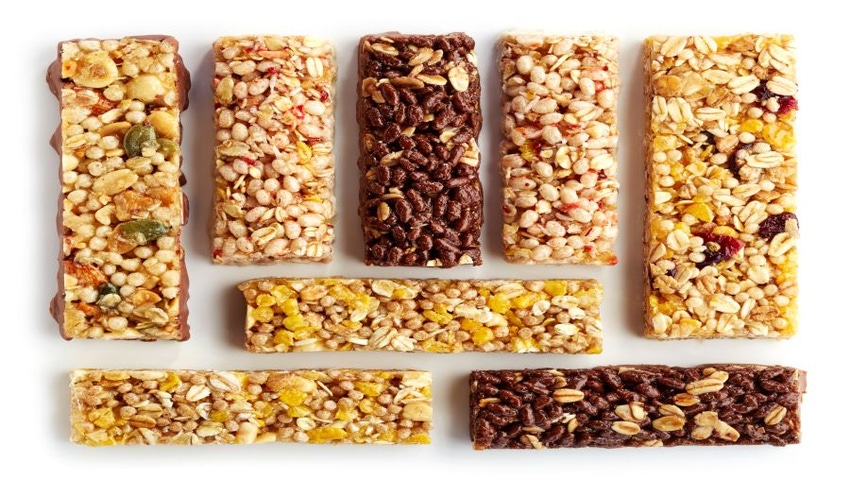Finding the Sweet Spot: Reducing Calories Without Sacrificing Consumer Acceptance
As obesity rates continue to climb in the United States, the food and beverage industry is actively creating more choices for consumers to meet their health goals of reducing sugar and calorie intake. While many Americans claim to want healthier foods and beverages, they will not trade taste for calorie reduction.
April 24, 2017

As obesity rates continue to climb in the United States, the food and beverage industry is actively creating more choices for consumers to meet their health goals of reducing sugar and calorie intake. While many Americans claim to want healthier foods and beverages, they will not trade taste for calorie reduction. Among the consumers who say they are consuming foods and beverages with low-calorie sweeteners, nearly half (48 percent) do so to help reduce overall calorie consumption. However, when asked what factors impact their food purchase decisions, 84 percent agree taste is at the top of their list, followed by price and healthfulness, respectively.1
It’s no surprise that food and beverage manufacturers are eager to create and position their brands as healthier alternatives. But even with countless sweetening options on the market today, formulators attempting to reduce calories in their products are stumped by various functional challenges posed—delivering the same great taste as the full-calorie versions but without impacting the eating experience.
Alternatives for Sweetening Low-Calorie Products
Many manufacturers use zero- and low-calorie sweeteners (natural and artificial) to cut calories in formulations and deliver a sweet taste profile. These ingredients are often sweeter than sugar, so they are used at lower levels in the final product. This means they cannot contribute any of the attributes of sugar, including texture and mouthfeel. However, the sweetener landscape changed in February 2015 with the introduction of an innovative ingredient that enables manufacturers to create healthier products with the taste, sweetness and texture that until now only sugar could provide. Enter allulose.
An Innovative Sweetening Solution to Effectively Reduce Calories
Allulose, a low-calorie sweetening ingredient, provides the full taste and enjoyment of sugar but without all the calories. Unlike stevia and monk fruit or artificial sweeteners, allulose is not a high-potency sweetener. Allulose is 70 percent as sweet as sucrose and has the same temporal profile as sucrose, unlike other zero- or low-calorie alternatives available. Formulating with allulose makes it easier for food and beverage manufacturers because it delivers many of the benefits that sucrose offers beyond just sweetness.
Even health professionals overwhelmingly indicate interest in recommending products made with allulose when making suggestions to reduce excess calories (nearly 75 percent).2 They agree that their patients and clients are more likely to adhere to diet and lifestyle management if they have low-calorie options with the same great taste and texture as full-calorie versions.
More Flexibility for Formulators
Using "sweetener toolboxes" that include allulose can help manufacturers achieve specific claims and maintain the taste and texture of the full-calorie product. In fact, allulose and stevia recently were used to create a blueberry chewy granola bar with a 20 percent reduction in calories and a 25 percent reduction in sugar. In addition to allulose, soluble corn fiber was used to help maintain taste and texture. By adding soluble corn fiber to the formulation, the final product provided an "excellent source of fiber," in addition to reduced calories and sugar. This is just one example of how allulose is anticipated to be one of the more flexible ingredients to reduce sugar and calories in virtually every category.
If that wasn’t enough, the format of allulose was recently expanded to include crystalline. This format provides manufacturers with both syrup and crystalline allulose to formulate a diverse range of low-calorie foods and beverages. For example, crystalline allulose is ideal in a fat-based system, such as chocolate, where formulators can’t introduce moisture into the formulations, because too much moisture can cause texture issues.
With even more innovative low-calorie sweetening solutions, formulators can effectively bring low-calorie foods and beverages to market without sacrificing consumer acceptance. Partnering with a supplier that has a full range of solutions and expertise can make the journey much easier. More important, it can also ensure that manufacturers achieve the claims best suited for their target audience without sacrificing consumer acceptance.
Adrienne Pohrte is the product manager for sweetener innovations at Tate & Lyle. Pohrte brings more than a decade of experience in food science to her role, where she works with food and beverage manufacturers to create healthier and tastier products for consumers. She began her career with Tate & Lyle as a food technologist in 2006. Pohrte holds an MS degree in food science from the University of Illinois at Urbana-Champaign and is a current member of the Institute of Food Technologists (IFT).
1 IFIC, 2016 Food and Health Survey
2 Tate & Lyle Research, 2014
About the Author(s)
You May Also Like




.png?width=800&auto=webp&quality=80&disable=upscale)